A google search found this piston flutter calculator 
On my VW for my Onex, the potential ring flutter can start at 6753 RPM, which is about twice of the max RPM (3500). I would think a similar relation exists on lycomings.
That’s a brilliant find!
It does show one thing: flutter is nothing to do with the MP!
STOLman wrote:
Without doubt clearances need to be bigger in air cooled engines over water cooled engines.
That’s obviously true in general but there are exceptions and (I think) scope for development of air cooled aircraft cylinders. Aluminum cylinders are being developed and sold now for Lycomings and I’m interested to see how they work out. Air cooled motorcycle cylinders are smaller and perhaps less challenging than aircraft cylinders but have been made to seal properly over the last 35 years, with zero-low oil consumption and reasonable life. If you look at a Nikasil bored air-cooled cylinder with 150,000 km you may see zero wear on the cylinder, and only a little on the piston. I think the only reason they’re going to water cooling is high rpm, which is unnecessary or undesirable even for some motorcycle applications, and mechanical (not exhaust) noise issues that are inapplicable to an engine with a propeller.
With respect to clearances specifically, air cooled aluminum cylinders can run small clearances and even with steel lined cylinders you find some interesting exceptions: piston to cylinder clearance on old air-cooled 1970’s Ducati motorcycles with steel liners is only 0.02 to 0.04mm with Borgo pistons.
I think the issue in 2015 is getting a 2700 rpm large bore air cooled cylinder to seal up as well as a 8000 rpm smaller bore air cooled cylinder. It is not an issue with air-cooled cylinders generically, and I think the best solution may be to improve what we have versus adopting car technology… which probably wont happen anyway because almost nobody wants to fuss around with water pumps, hoses, mandatory turbocharging and etc.
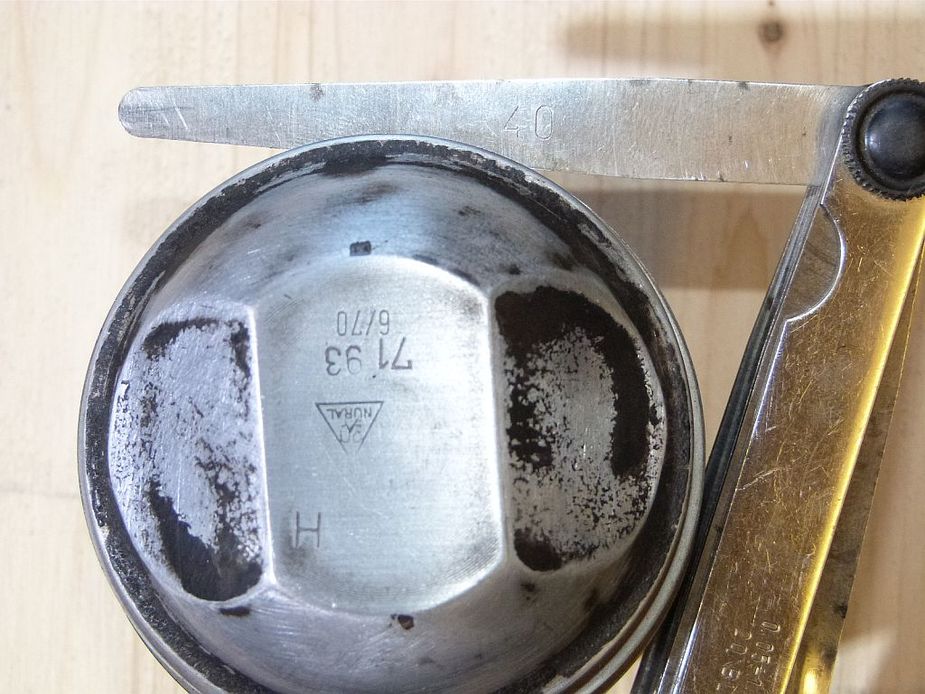
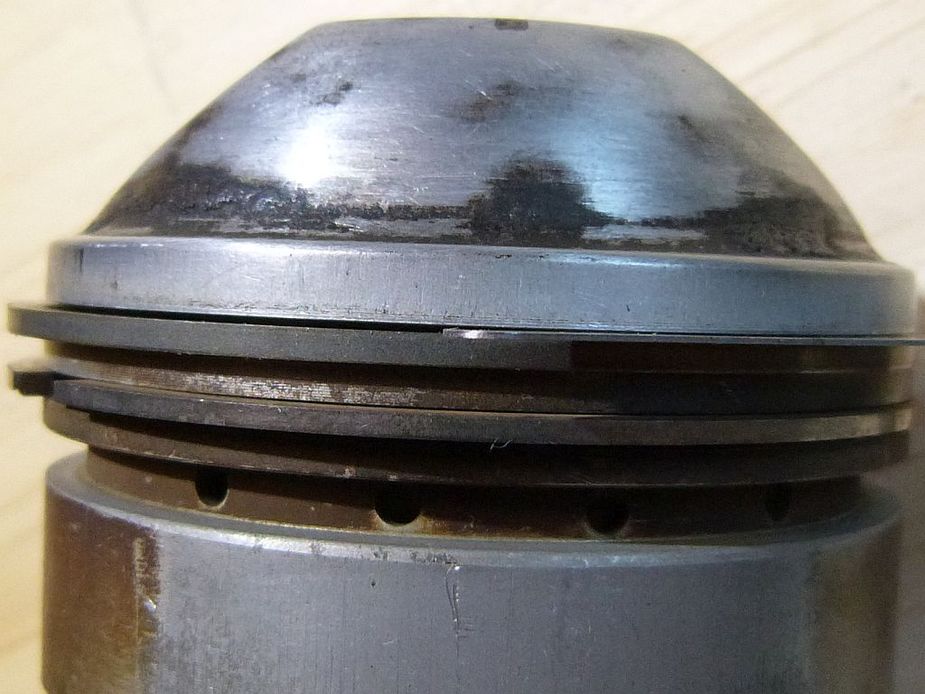

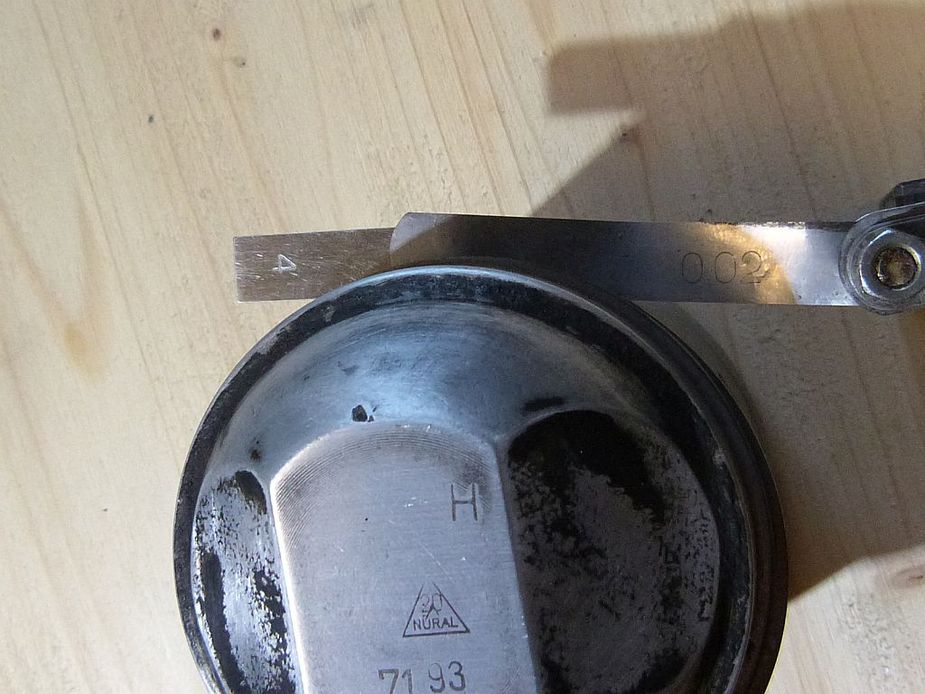
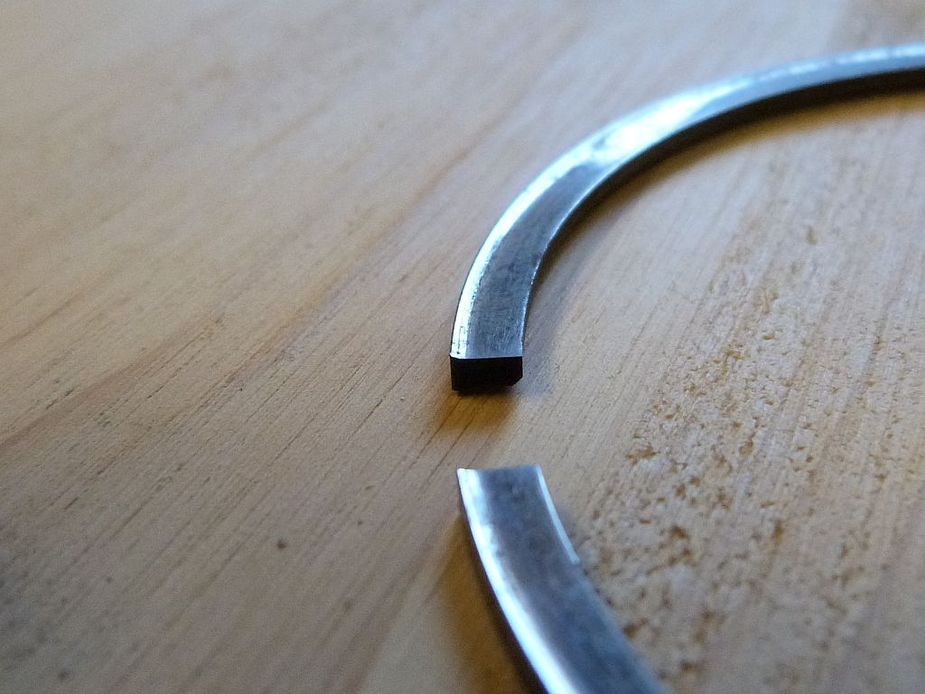
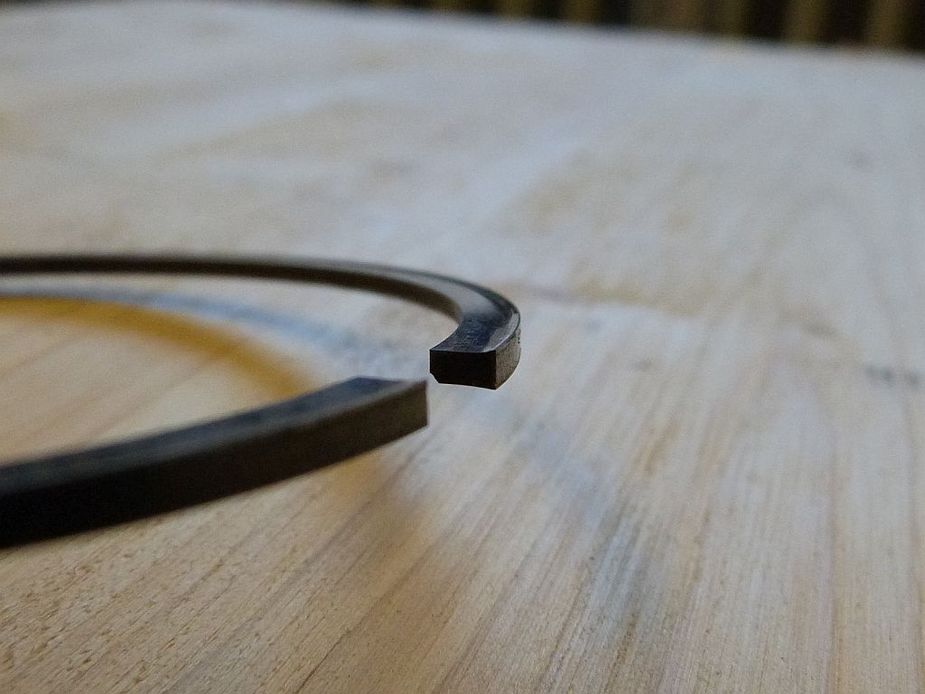
Nice pics, Vic  That ring looks just like mine but without the bevel
That ring looks just like mine but without the bevel
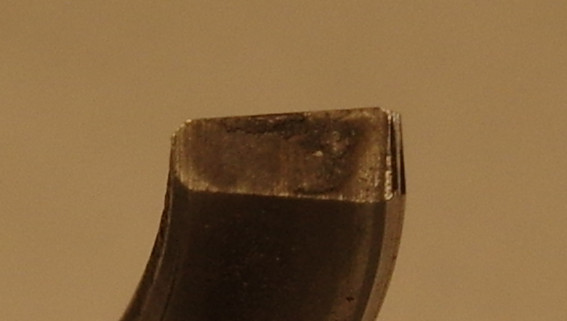
Looking at that site with the flutter calculator, it doesn’t suggest that the onset of flutter is anything to do with the engine being clapped out, or being operated at a low MP. The calculation, which sounds plausible, seems to be related to the motion of the piston and the height of the top piston ring alone.
I also cannot see a mechanism for flutter other than a resonant frequency / excitation related one. That is the case for control surface flutter: the excitation is the TAS of the airflow, and the resonant frequency is whatever the control surface has. Damping must also come into it but damping doesn’t change the resonant frequency; it can merely attenuate the flutter, possibly completely. In the case of the piston, where will the damping come from? The compression ring must be free to move in its groove otherwise it won’t work to seal the gap between the piston and the cylinder wall.
@Peter I guess you haven’t read the text or the linked paper. Because it mentions cylinder pressure and also that this calculation is simple approximation for racing engines where the cylinder pressure is hidden and some typical value for naturally aspirated racing engines is used (as it doesn’t vary that much among such engines, according to the text).
PS: The basic idea seems to be that the pressure of gasses must overcome inertia of the ring and friction between cylinder wall and the ring to maintain a good seal. The thickness of the ring is used to calculate its weight, another simplification.
PS2: As for the second paragraph, AIUI resonance isn’t required for aeroelastic flutter.
As clarified in posts #33 and 34 
I think the paper is very interesting.
I did read it but didn’t grasp the simplifications. The ring thickness was however obviously a proxy for its mass.
I still do not believe flutter is responsible for the – apparently not disputed – higher oil loss at high RPM + low power settings. This is because the positive pressure on the compression (top) ring is present for only a very short portion of the 4-stroke cycle. The rest of the time the piston+conrod assembly is driven by the inertia of the crankshaft+propeller assembly, which IMHO throws out of the window the assertion that ring flutter is occurring (or if it is occurring, that it does any harm). The typical engine will have done of the order of 1000 landings by the time it reaches TBO which is of the order of 100 hours at close to no power (and nobody I know sets the governor to a low RPM; in fact most do exactly the opposite and select max RPM in the circuit to land) yet nobody I have spoken to has ever seen ring groove damage other than due to other known causes. One should be seeing almost universal damage if this was a real issue.
I think that if you can find a big hole in a theory, the theory has a big problem 
Obviously it’s much easier to demolish a theory (using this method or any other) than to create a new one, but I am happy with that 
@Peter Yes, but who says there has to be pressure on the ring all the time? Lets think about it. To get a fluttering ring, there must be “fighting” going on. There are four strokes. During intake, friction and inertia (for short, I’ll just use F&I) push the ring away from crankshaft (up) and there should be low pressure in the cylinder as air is sucked in, no “fighting”. During compression, cylinder pressure increases and F&I are also pushing the ring down, again no “fighting”. Then there is expansion where they can “fight” (pressure pushes the ring down and F&I up). And last one is exhaust where pressure should be higher above the ring as gasses are expelled and, just like with compression, F&I are pushing the ring down (the pressure would have to drop so much that the ring would get sucked up). And when you look into that paper it seems that flutter occurs in a specific part of a cycle (during expansion – I just looked at it briefly some hours before, so I might be a bit off). Result of the flutter is loss of seal and excessive blow-by.